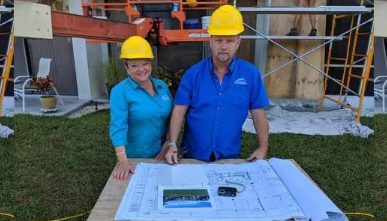In the realm of modern architecture, the term “meticulous construction” is not just a catchphrase but a fundamental necessity. As we push the boundaries of design and aesthetics, the role of precision and careful planning becomes paramount in ensuring that the structures we build are not only visually striking but also structurally sound and sustainable. This article explores why meticulous construction is crucial in modern architecture and how it impacts every facet of the built environment.
Enhancing Structural Integrity
The primary benefit of meticulous construction is its impact on the structural integrity of buildings. Modern architecture often involves complex designs that include cantilevers, unusually shaped facades, and extensive use of glass. Each of these elements requires precise calculations and execution to ensure they can withstand environmental stresses such as wind, earthquakes, and weight load.
For instance, the construction of high-rise buildings in earthquake-prone areas demands an exacting level of detail in the choice of materials, the design of the foundation, and the overall structural framework. Any deviation from the meticulously planned specifications can lead to catastrophic failures, highlighting the importance of precision from the initial design phase through to the completion of the construction.
Achieving Energy Efficiency
Meticulous construction also plays a pivotal role in achieving energy efficiency, a key component of sustainable modern architecture. Buildings are one of the largest sources of energy consumption globally, and reducing this footprint is critical. Detailed attention in the construction phase ensures that every element of the building’s design contributes to energy conservation, from the orientation of the building to maximize natural light and heat, to the installation of insulation and energy-efficient systems.
For example, the meticulous installation of advanced HVAC systems and the strategic placement of thermal insulation materials can significantly reduce energy leakage. This not only helps in conserving energy but also in reducing the overall operational costs of a building, making meticulous construction economically beneficial as well.
Improving Aesthetic Appeal
The aesthetic appeal of a building plays a significant role in its value and the way it is perceived by people. Meticulous construction ensures that the architectural vision is brought to life exactly as intended. This involves precise craftsmanship and attention to detail in the use of materials, colors, and finishes.
In modern architecture, the visual impact of a building can often hinge on the subtleties of its construction—be it the seamless integration of glass panels that create an illusion of open space or the perfect alignment of metallic trims that highlight futuristic designs. Each element needs to be executed flawlessly to achieve the desired impact.
Ensuring Safety
Safety is an aspect where meticulous construction cannot be compromised. Modern buildings, with their complex systems and functionalities, need to adhere strictly to safety codes and standards. This ranges from fire safety systems being intricately woven into the architectural design, to the installation of safety features like emergency exits and accessibility options in compliance with local laws.
For example, meticulous attention to detail is required in the installation of fire suppression systems, ensuring that sprinklers are correctly placed and fully functional. Similarly, the construction of staircases and corridors must follow strict guidelines to ensure they are safe for everyday use and in emergency situations.
Promoting Longevity and Durability
Finally, meticulous construction is essential for ensuring the longevity and durability of modern structures. The use of high-quality materials and advanced construction techniques contributes to buildings that not only meet current standards but are also durable enough to stand the test of time.
Regular maintenance can be minimized, and the lifecycle of the building extended, when every component from the foundation to the rooftop is constructed with precision. This not only enhances the building’s resilience against physical and environmental challenges but also contributes to a sustainable architectural practice by reducing the need for frequent repairs and renovations.
Conclusion
Meticulous construction in modern architecture is more than just a requirement—it is a commitment to excellence that impacts everything from safety and sustainability to aesthetics and durability. As we continue to innovate and evolve in the field of architecture, the importance of being meticulous in our construction methods cannot be overstated. It is the backbone that supports the ambitious visions of architects and the functional needs of the users, ensuring that the buildings we create today can stand as lasting symbols of our technological and artistic prowess.




